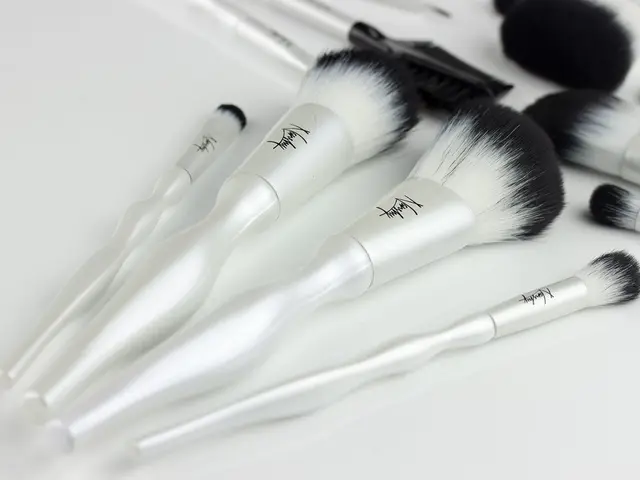Exploring Beef Tallow as a Skincare Moisturizer: Dermatologists Weigh In on This Controversial Trend
Glowing Skin with Beef Tallow: A Dermatologist-Approved Trend?
Embrace the weird and wonderful world of skincare with the latest buzz—beef tallow. That's right, rendered cow fat is making its way onto faces worldwide, but is it actually beneficial for your skin? Here's a breakdown of what the dermatologists have to say about this bizarre moisturizer.
Beef Tallow: The Skin's New Best Friend?
You might be wondering, what in the world could possibly make us slather cow fat onto our faces? Well, let's dive deeper into this greasy goldmine. Beef tallow is animal fat, specifically from cattle, that has been rendered and clarified to ensure shelf stability and limit bacterial growth. It's got a solid texture, like wax, and is chock-full of nutrients—containing fatty acids, lipids, and vitamins such as A, D, E, and K.
So, WhyApply It To Our Skin?
Why toss caution (and hygiene standards) to the wind? Because, as it turns out, tallow absorbs quickly into the skin and creates a sturdy barrier to protect the outer skin layer. Its ultra-hydrating lipids help maintain moisture and reduce dryness. Plus, its fatty acids keep skin hydrated and may assist in skin regeneration, reducing scarring, and soothing irritated skin.
Risks and Caveats
While the thought of slathering meat production byproduct on your face might seem intriguing, there are some possible drawbacks worth considering. Those with acne-prone skin may find tallow to be too thick and comedogenic, meaning it can potentially clog pores, leading to increased acne or irritation.
People with allergies to beef or other animal proteins should also be cautious, and even those with sensitive noses may not appreciate the meaty scent. And, of course, it's essential to remember that this trend may not be suitable for every skin type. As always, patch-test for allergies and consult with your dermatologist before diving headfirst into the trend.
How to Use Beef Tallow in Skincare
Ready to give tallow a shot (or smear)? Make sure to invest in a quality product that's sourced from clean, grass-fed cattle. If extra hydration is your goal, search for options that blend tallow with oils like jojoba to strike the right balance.
Before slathering it on, warm a small amount in your hands and apply it to clean, slightly damp skin, either as an overnight treatment or on dry areas. If you find the tallow too thick, mix it with a lighter moisturizer to strike the right balance. Use it sparingly, as you wouldn't want to send your skin into oil overload.
Alternatives to Beef Tallow
Not ready to embrace your inner Victorian-era cowherd? There are plenty of other hydrating skincare options at your disposal. Consider diving into plant-derived moisturizers like coconut, argan, or jojoba oil, or opt for skincare products formulated specifically for dry skin, such as those containing hyaluronic acid, squalane, or niacinamide.
Dermatologist-Approved Products
- La Roche-Posay Toleriane Double Repair Moisturizer: Boasts ceramides and niacinamide, ideal for soothing redness and irritation.
- Cetaphil Face & Body Moisturizer: Sweet almond oil and vitamin E nourish the skin, and it's hypoallergenic and non-comedogenic.
- Youth To The People Superberry Hydrate + Glow Dream Face Oil: Combines antioxidant-rich superberries with hydrating ingredients to reduce inflammation and protect the skin from external factors.
- Kiehl's Ultra Facial Cream: Infused with squalane, this lightweight cream absorbs quickly without feeling heavy and is perfect for sensitive skin types.
- Thayers Barrier Bestie Ultra Whip Face Cream: Rich and thick formula containing squalene and ceramides, excels at leaving very dry skin hydrated throughout the day.
In Closing
Whether you're a tallow-tempted trendspotter or prefer more traditional skincare options, remember that the key to a gleaming complexion lies in understanding your skin type, staying faithful to your skincare routine, and finding the products that work best for YOU. Happy moisturizing, my friends!
- The latest trend in skin-care is the use of beef tallow, an antioxidant-rich moisturizer derived from rendered cow fat, that is said to provide hydration and a protective barrier to the skin.
- While beef tallow may offer benefits like quick absorption, ultra-hydrating lipids, and potential skin regeneration, it also carries risks such as clogged pores, increased acne, and allergic reactions for certain individuals.
- To fully understand the effects of beef tallow on your skin, it is essential to consult with a dermatologist and perform a patch test before regular use.
- Incorporating beef tallow into your skincare routine involves warming a small amount, applying it to clean, damp skin, and adjusting its viscosity by mixing it with lighter moisturizers if needed.
- Those who prefer alternative skincare options can opt for plant-derived moisturizers like coconut, argan, or jojoba oil, or antioxidant-rich skincare products specifically designed for dry skin, such as those containing hyaluronic acid, squalane, or niacinamide. Some dermatologist-approved products include La Roche-Posay Toleriane Double Repair Moisturizer, Cetaphil Face & Body Moisturizer, Youth To The People Superberry Hydrate + Glow Dream Face Oil, Kiehl’s Ultra Facial Cream, and Thayers Barrier Bestie Ultra Whip Face Cream.










